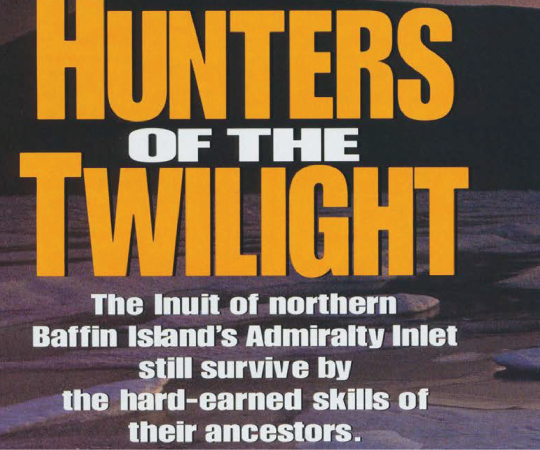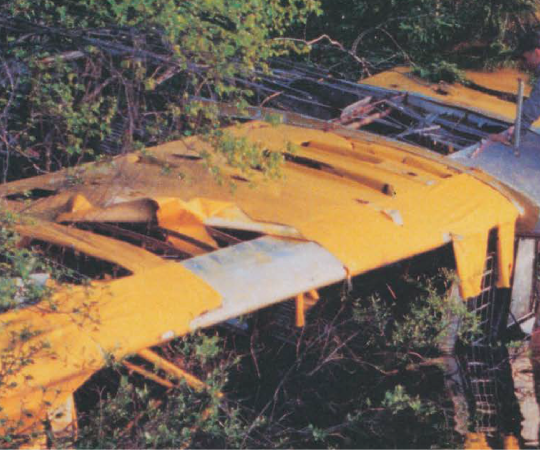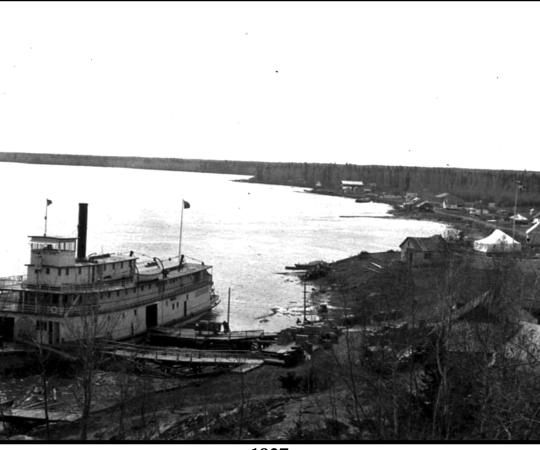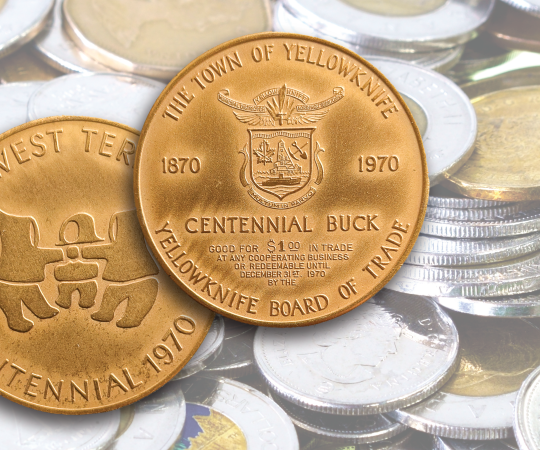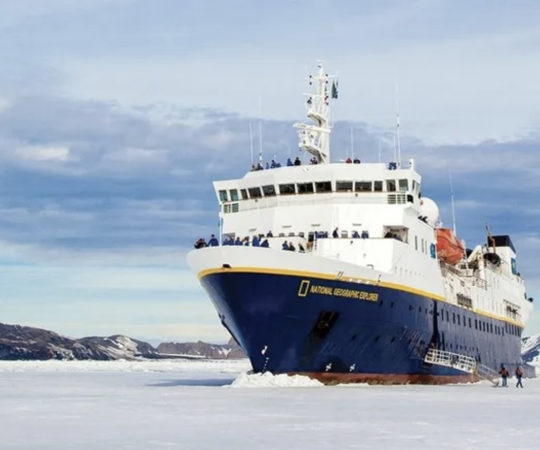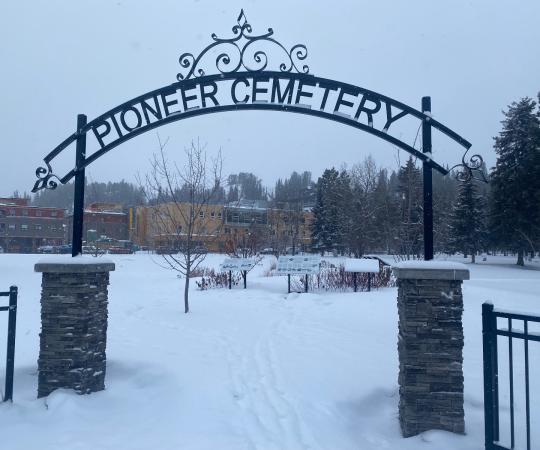Long before the winds picked up on Great Slave Lake the crew of the Radium King were probably eyeing their barges nervously. Two of them were carrying 125 tons of explosives and flammable materials destined for the mines further north. It was September 25, 1948 and the ship was about to endure what the Yellowknife-based News of the North would call “one of the worst shipping accidents in the history of NWT navigation.”
By the time the Radium King was 50 kilometres south of Yellowknife, she was caught in a full-fledged storm. Smoke was seen rising from one of the barges. Captain William J. Garvie, recognizing the danger, ordered the barges cut loose and powered through the storm, away from impending doom. The ship was only a few kilometres away when the barges blew, sending 1,000 tons of supplies to the bottom of the lake. The blast was so huge, it was seen seven kilometres away by the crew of another ship.
Hundreds of thousands of dollars worth of mining material—including a brand new mill, built in Montana for the new Discovery Mine north of Yellowknife—was lost in the disaster. There’s a good chance some precious beer (a normal staple of the ship’s supplies to northern mines) sank or exploded too. But all hands survived, and the Radium King would go on to brave another 19 years of northern shipping.
She was the first steel-hulled vessel to ply the silty waters of the Mackenzie River, hauling more freight than any of her predecessors—first canoes, then York boats and finally paddle-wheeled steamers—ever could. As railways did down south, the Radium King and the 10 other ships that followed in the Radium Line opened the North up to more development than ever before.
Radium King would carry uranium from Eldorado that would be used in the development of the atomic bombs dropped on Hiroshima and Nagasaki in 1945.
The Radium King first splashed into the waters north of the Fort Smith rapids in July 1937 to about as much fanfare as the small Northern outpost could muster. The lieutenant-governor of Edmonton was flown up for the launching ceremony, and his wife smashed the traditional bottle of champagne on the hull. A Northern crowd of trappers, missionaries, Mounties and First Nations attended, as well as workers from the Manseau shipyards in Sorel, Que. They had travelled ahead of the ship after it was disassembled at the shipyards, then carried aboard nine flatcars nearly 5,000 kilometres across the country to the northernmost CNR terminus in Waterways, Alta., where it was towed by her sister ship, the Radium Queen, to Fort Fitzgerald, Alta., portaged around the Slave River rapids 25 kilometres by tractors to Fort Smith, where the 35 Quebec-based workers reassembled her and installed her engines—something the Montreal Gazette called an “unprecedented feat in the history of Quebec shipbuilding.”
The ship was praised for its modern construction, including steam-heated quarters for the 10 crew and 10 passengers, refrigerated chambers to carry fresh meat, milk and vegetables and of course its twin 240-horsepower diesel engines and shallow draft, which allowed the Radium King to ply the low waters of the Mackenzie so deftly.
After her first season on the river system, southern newspapers raved about the record freight being shipped in the North, thanks in large part to the Radium King. Yellowknife was just being settled as gold exploration in the area exploded, oil in the Sahtu region was being exploited by the newly-formed town of Norman Wells and the Eldorado Mine on Great Bear Lake was already pumping out radium, so fast, reliable transportation was needed to supply these new developments. In the ship’s first season more than 6.5 million kilograms of freight were hauled along the Mackenzie River system, followed by a record breaking 23 million kilograms in 1938.
A few years later the Radium King would carry uranium from Eldorado that would be used in the development of the atomic bombs dropped on Hiroshima and Nagasaki in 1945.
“Tugs never stay in port longer than necessary to complete any repair jobs or to pick up their barges and head out again. One young deckhand’s hair grew over his shirt collar because he said he ‘had better things to do on shore’ than sit in a barber’s chair.”
Life running the northern rivers was a tough one. The muddy, low waters of the Mackenzie were poorly marked and pilots had to have deft hands and eyes to steer their ships away from sand bars or bouldered rapids.
Author P.G. Downes rode the Radium King in the summer of 1938, as he travelled up to Great Bear Lake, and recounts a close call the ship had upriver of Fort Simpson.
“As we passed the [Green Island] a severe shock was felt, but we kept on going and started the crossing to the other side. Just as I took a picture of the barge we struck, and the ship rolled crazily—then we struck again but kept on with a roaring, grating noise. Then it was all over—but so quickly that no one had time to do anything,” Downes wrote. The ship made it to Fort Simpson with a few bumps and bruises.
In a Saskatoon Star-Phoenix article from 1956, the author observes the fleeting port life of the crews. “Tugs never stay in port longer than necessary to complete any repair jobs or to pick up their barges and head out again. One young deckhand’s hair grew over his shirt collar because he said he ‘had better things to do on shore’ than sit in a barber’s chair.”
After 30 years of service the Radium King was retired. It was sold to the Northern Anthropological and Cultural Society in 1973 for $1. Now part of the Northern Life Museum and Cultural Centre’s outdoor exhibit in Fort Smith, the tug sits close to where it was originally launched in 1937.
The Radium King’s successors pass it by, the old grounded relic, just as it passed by the technology it made obsolete nearly 80 years ago. Downes observed a similar passing during his journey, as the Radium King overtook the S.S. Mackenzie River, outside of Wrigley, NT in 1938: “Passed Mackenzie River, paddle-wheel steamer bound upstream, just at sunset. The sun gleaming on the small white steamer with its great stern wheel thrashing up a foaming wake and spouting great clouds of white smoke. Each craft saluted decorously and briefly. The great Mackenzie rolling ever so silently down to the Arctic sea! What ghosts of men and deeds!”


